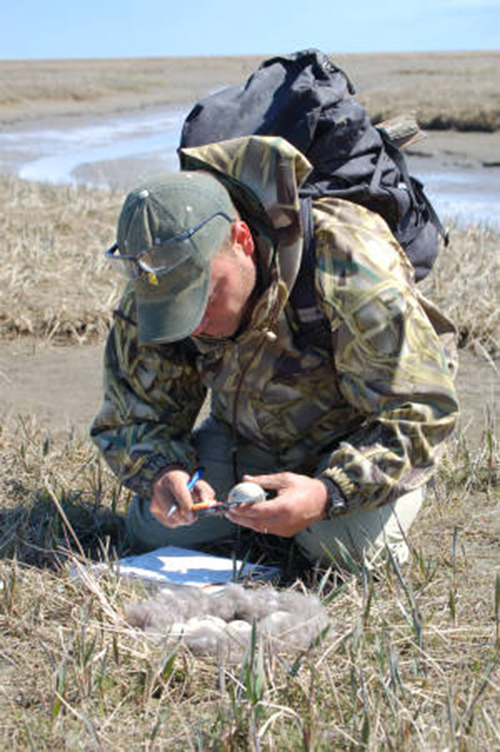| << Chapter < Page | Chapter >> Page > |
In this textbook, we are primarily concerned with clinical applications of microbiology, but since the various subfields of microbiology are highly interrelated, we will often discuss applications that are not strictly clinical.

In the 1940s, the U.S. government was looking for a solution to a medical problem: the prevalence of sexually transmitted diseases (STDs) among soldiers. Several now-infamous government-funded studies used human subjects to research common STDs and treatments. In one such study, American researchers intentionally exposed more than 1300 human subjects in Guatemala to syphilis, gonorrhea, and chancroid to determine the ability of penicillin and other antibiotics to combat these diseases. Subjects of the study included Guatemalan soldiers, prisoners, prostitutes, and psychiatric patients—none of whom were informed that they were taking part in the study. Researchers exposed subjects to STDs by various methods, from facilitating intercourse with infected prostitutes to inoculating subjects with the bacteria known to cause the diseases. This latter method involved making a small wound on the subject’s genitals or elsewhere on the body, and then putting bacteria directly into the wound. Kara Rogers. “Guatemala Syphilis Experiment: American Medical Research Project”. Encylopaedia Britannica . http://www.britannica.com/event/Guatemala-syphilis-experiment. Accessed June 24, 2015. In 2011, a U.S. government commission tasked with investigating the experiment revealed that only some of the subjects were treated with penicillin, and 83 subjects died by 1953, likely as a result of the study. Susan Donaldson James. “Syphilis Experiments Shock, But So Do Third-World Drug Trials.” ABC World News . August 30, 2011. http://abcnews.go.com/Health/guatemala-syphilis-experiments-shock-us-drug-trials-exploit/story?id=14414902. Accessed June 24, 2015.
Unfortunately, this is one of many horrific examples of microbiology experiments that have violated basic ethical standards. Even if this study had led to a life-saving medical breakthrough (it did not), few would argue that its methods were ethically sound or morally justifiable. But not every case is so clear cut. Professionals working in clinical settings are frequently confronted with ethical dilemmas, such as working with patients who decline a vaccine or life-saving blood transfusion. These are just two examples of life-and-death decisions that may intersect with the religious and philosophical beliefs of both the patient and the health-care professional.
No matter how noble the goal, microbiology studies and clinical practice must be guided by a certain set of ethical principles. Studies must be done with integrity. Patients and research subjects provide informed consent (not only agreeing to be treated or studied but demonstrating an understanding of the purpose of the study and any risks involved). Patients’ rights must be respected. Procedures must be approved by an institutional review board. When working with patients, accurate record-keeping, honest communication, and confidentiality are paramount. Animals used for research must be treated humanely, and all protocols must be approved by an institutional animal care and use committee. These are just a few of the ethical principles explored in the Eye on Ethics boxes throughout this book.
Cora’s CSF samples show no signs of inflammation or infection, as would be expected with a viral infection. However, there is a high concentration of a particular protein, 14-3-3 protein, in her CSF. An electroencephalogram (EEG) of her brain function is also abnormal. The EEG resembles that of a patient with a neurodegenerative disease like Alzheimer’s or Huntington’s, but Cora’s rapid cognitive decline is not consistent with either of these. Instead, her doctor concludes that Cora has Creutzfeldt-Jakob disease (CJD) , a type of transmissible spongiform encephalopathy (TSE).
CJD is an extremely rare disease, with only about 300 cases in the United States each year. It is not caused by a bacterium, fungus, or virus, but rather by prions —which do not fit neatly into any particular category of microbe. Like viruses, prions are not found on the tree of life because they are acellular. Prions are extremely small, about one-tenth the size of a typical virus. They contain no genetic material and are composed solely of a type of abnormal protein.
CJD can have several different causes. It can be acquired through exposure to the brain or nervous-system tissue of an infected person or animal. Consuming meat from an infected animal is one way such exposure can occur. There have also been rare cases of exposure to CJD through contact with contaminated surgical equipment Greg Botelho. “Case of Creutzfeldt-Jakob Disease Confirmed in New Hampshire.” CNN . 2013. http://www.cnn.com/2013/09/20/health/creutzfeldt-jakob-brain-disease/. and from cornea and growth-hormone donors who unknowingly had CJD. P. Rudge et al. “Iatrogenic CJD Due to Pituitary-Derived Growth Hormone With Genetically Determined Incubation Times of Up to 40 Years.” Brain 138 no. 11 (2015): 3386–3399. J.G. Heckmann et al. “Transmission of Creutzfeldt-Jakob Disease via a Corneal Transplant.” Journal of Neurology, Neurosurgery&Psychiatry 63 no. 3 (1997): 388–390. In rare cases, the disease results from a specific genetic mutation that can sometimes be hereditary. However, in approximately 85% of patients with CJD, the cause of the disease is spontaneous (or sporadic) and has no identifiable cause. National Institute of Neurological Disorders and Stroke. “Creutzfeldt-Jakob Disease Fact Sheet.” NIH . 2015. http://www.ninds.nih.gov/disorders/cjd/detail_cjd.htm#288133058. Based on her symptoms and their rapid progression, Cora is diagnosed with sporadic CJD.
Unfortunately for Cora, CJD is a fatal disease for which there is no approved treatment. Approximately 90% of patients die within 1 year of diagnosis. National Institute of Neurological Disorders and Stroke. “Creutzfeldt-Jakob Disease Fact Sheet.” NIH . 2015. http://www.ninds.nih.gov/disorders/cjd/detail_cjd.htm#288133058. Accessed June 22, 2015. Her doctors focus on limiting her pain and cognitive symptoms as her disease progresses. Eight months later, Cora dies. Her CJD diagnosis is confirmed with a brain autopsy.
Go back to the previous Clinical Focus box.
Multicellular parasitic worms studied by microbiologists are called ___________.
helminths
Describe the differences between bacteria and archaea.
Name three structures that various protozoa use for locomotion.
Describe the actual and relative sizes of a virus, a bacterium, and a plant or animal cell.

Notification Switch
Would you like to follow the 'Microbiology' conversation and receive update notifications?